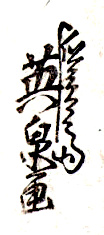Eisen Keisai (1790-1848)
Keisai Eisen emerged as a prominent figure in the ukiyo-e world, born in Edo into a family deeply rooted in the arts. Apprenticed at a young age to Kano-style painters, including the influential Kikugawa Eiji, Eisen initially showcased a strong influence from his mentors in his early works. However, he quickly developed his own distinctive style, marked by animated depictions and a focus on landscapes, surimono, and bijin-ga (beauty) prints.
Eisen's landscapes, notably the series "Eight Views of Edo" and "The Sixty-nine Stations of the Kiso Road," demonstrate his keen eye for capturing the essence of nature. Yet, it is his bijin-ga prints that truly showcase his artistic brilliance. Eisen's portrayal of courtesans, characterised by their elegance and allure, rivalled the works of his contemporaries, such as Kunisada. However, Eisen's use of subdued colours imparted a mysterious and erotic quality to his prints, contrasting with Kunisada's vibrant palette. Moreover, Eisen's innovation extended to print-making techniques, notably aizuri-e, which featured ukiyo-e prints exclusively in shades of blue, reflecting the artistic trends of the time.
Beyond his mastery in print-making, Eisen's literary contributions further solidified his legacy. He authored biographies, including "Ukiyo-e Ruiko," offering valuable insights into the lives of ukiyo-e artists. However, Eisen's personal life was as colourful as his art, marked by a reputation for indulgence, heavy drinking, and even alleged involvement in running a brothel in Edo. Despite his unconventional lifestyle, Eisen's artistic legacy endures and he is celebrated for his captivating prints that continue to enchant audiences worldwide.
 |
 |
Signatures: Keisai Eisen ga (left), Eisen ga (right)

